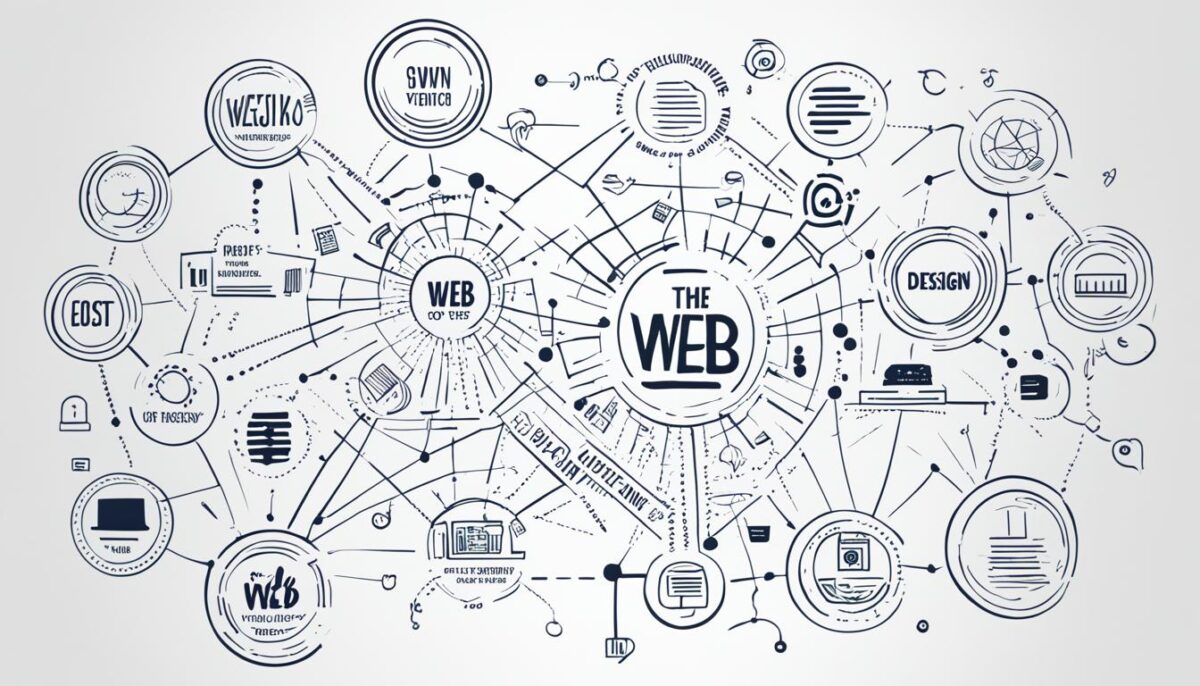Welcome to our guide on web design costs. Whether you’re a business owner or an individual looking to establish an online presence, it’s essential to understand the factors that influence web design costs and how to budget effectively. In this article, we will explore the key considerations in determining the cost of web design and provide you with valuable tips to help you plan and allocate your resources wisely.
Designing a website involves various factors that contribute to its overall cost. The complexity of the design, the number of pages required, desired functionality, customization needs, ongoing maintenance, and additional services all impact the price tag of your web design project.
To budget effectively for your online presence, it’s crucial to determine your goals and prioritize the features that are essential for achieving those objectives. Researching pricing options and obtaining multiple quotes from different web design agencies can provide valuable insights into the market rates and help you make an informed decision.
Furthermore, it’s important to consider the long-term costs associated with maintaining and updating your website. Investing in a scalable and easily maintainable design can save you money down the line.
By following these tips and taking the time to understand the various factors influencing web design costs, you’ll be better equipped to create a realistic budget and ensure that your investment in web design delivers the desired results.
Next, we’ll dive deeper into the specific factors that influence web design costs, shedding light on how each aspect affects the overall price. Stay tuned!
Factors Influencing Web Design Cost
When it comes to web design, there are several factors that can influence the overall cost of your project. Understanding these factors will help you plan and budget effectively for your online presence. Let’s explore the key elements that contribute to the cost of web design:
Design Complexity
The complexity of your design plays a significant role in determining the cost of your website. A simple, minimalist design will be less expensive compared to a highly intricate and visually stunning design. Complex designs typically require more time and effort from web designers, resulting in a higher cost.
Number of Pages
The number of pages on your website is another crucial factor that affects the cost. Larger websites with numerous pages, such as e-commerce platforms or content-heavy sites, generally require more time and resources to design and develop. Consequently, the higher the number of pages, the higher the cost.
Functionality
Functionality refers to the features and interactive elements incorporated into your website. Advanced functionalities like e-commerce integration, database management, custom forms, and user logins can significantly impact the cost. Each additional functionality requires specialized programming and testing, which adds complexity and time to the project.
Customization Needs
If you have specific branding requirements or desire a unique look and feel for your website, customization will be necessary. Customization involves tailoring the design, layout, and features to align with your brand’s identity and goals. Customized websites usually require more effort, leading to higher costs compared to pre-designed templates.
Maintenance
It’s important to consider the ongoing maintenance and updates required for your website. Regular maintenance, including security updates, bug fixes, and content updates, ensures optimal performance and user experience. The cost of maintenance can vary depending on the complexity of your website and the frequency of updates.
Additional Services
Besides web design, you may require additional services such as content writing, search engine optimization (SEO), graphic design, or digital marketing. These services can contribute to the overall cost of your web design project. Each additional service adds value to your website but also adds to the cost.
Now that we’ve discussed the key factors influencing web design cost, you can begin to evaluate how each element applies to your specific project. By understanding these factors, you can make informed decisions to create a website that aligns with your vision and budget.

Tips to Budget for Your Online Presence
When planning your web design project, it’s essential to budget accurately to ensure you get the most out of your investment. Here are some practical tips to help you navigate the budgeting process.
Firstly, determine your goals. Are you looking to create an e-commerce website, a portfolio site, or a corporate website? Clearly defining your objectives will give you a better understanding of the features and functionality you’ll need, allowing you to allocate your resources accordingly.
Prioritize the features that are crucial to your website’s success. Identify the must-have elements and differentiate them from the nice-to-have ones. This will help you streamline the design process and focus your budget where it matters most.
Research pricing options and get multiple quotes from different web design agencies. By comparing prices and services, you’ll be able to make an informed decision and find the right balance between quality and cost. Remember, the cheapest option may not always deliver the best value in the long run.
Lastly, consider the long-term costs associated with your website. Maintenance, updates, and ongoing support are critical for keeping your website running smoothly. Factor these costs into your budget to avoid any surprises down the road.
By following these tips and taking a thoughtful approach to your budgeting process, you’ll be well-equipped to make informed decisions, prioritize effectively, and create an impactful online presence within your means.
